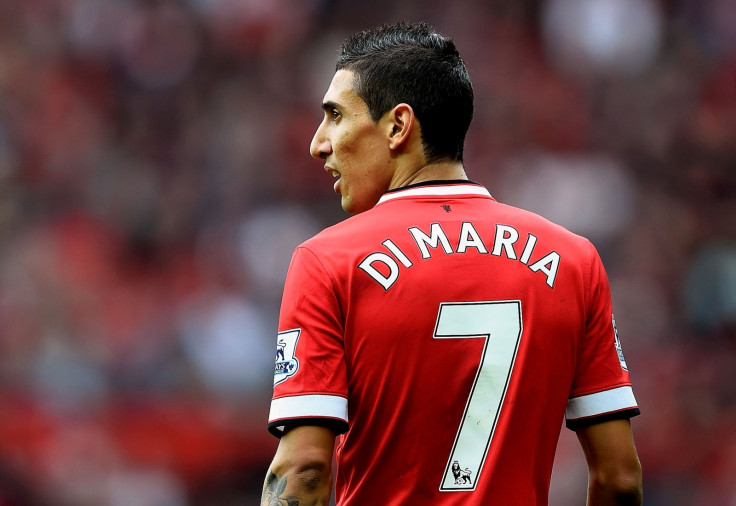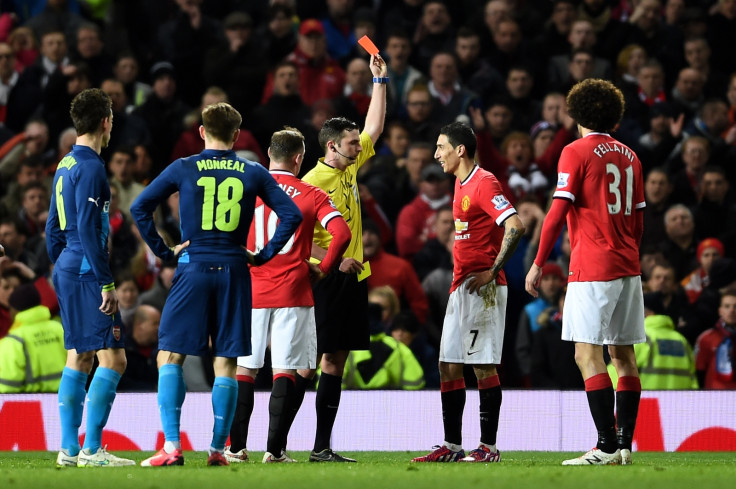Angel di Maria at Manchester United: Where did it all go wrong?

Where is Angel di Maria? That was the question Manchester United manager Louis van Gaal was asked in a press conference on 30 July. Paris would be a decent guess.
Almost a year on from his arrival at Old Trafford for a Premier League record fee, the Argentina international is about to leave with a whimper to join Paris Saint-Germain in a deal that will surely see the Premier League side make a loss on last summer's £59.7m investment.
Instead of following the usual formula of enduring a timid start before eventually growing into a new league, Di Maria's trajectory went in the opposite direction. His impudent chip against Leicester City, in just his third game for the club, was as good as it got before his star began to fall.
But why has it all gone so awfully wrong for someone who is so unmistakably talented?
Injury against Hull City
The first of a string of injury problems that contributed to Di Maria's malaise in England. By this point in the season, Di Maria had begun to quieten down after that blistering start that yielded three goals and three assists in his first four appearances, but his automatic role on the team sheet was still assured.
After just 13 minutes of a home tie against Hull City on 29 November, he left the pitch with a hamstring problem, heading straight down the tunnel for treatment. Having already played in six different positions in first 16 appearances for the club, Di Maria's struggles for consistency worsened upon his return and scored just one more goal for the club– against Yeovil Town in an FA Cup third round tie.
House robbery
The combination of adapting to a new team, a new manager and a new league is difficult enough, but perhaps the most pivotal factor in Di Maria's struggle took place off the pitch. On 31 January, buglers attempted to smash their way into the midfielder's Cheshire home while he was in the house with his wife Jorgelina Cardoso and young daughter. The family promptly moved to an apartment in Manchester's city centre.
Red card against Arsenal
The apex of Di Maria's woes on the pitch came on one fateful evening at Old Trafford in March. Having supplied a sumptuous cross for Wayne Rooney's equalising header in the first half, the Argentine lost his head in the second when he inexplicably grabbed the shirt of referee Michael Oliver when appealing a decision. His teammates were indignant over the decision that saw him shown a straight red, but Louis van Gaal was not in a sympathetic mood, telling the player he had "no excuses" after United's final shot at silverware last season came to a bleak end.

Snubbed for Liverpool showdown
Following that red card, United produced their best performance of the campaign six days later against Tottenham Hotspur while Di Maria served his suspension. It was a pivotal point in United's season where they took on Spurs, Liverpool and Manchester City in the space of four games, with Liverpool breathing down their neck following their own remarkable run of form.
Di Maria was available for the crucial trip to Anfield the following week but Ashley Young, after a magical performance against Spurs, was selected ahead of him. Despite coming off the bench and providing the assist for Juan Mata's sublime second goal, it did little to change the manager's mind. Di Maria failed to make it off the bench in United's next two games, which just so happened to be two more excellent team performances against Aston Villa and Manchester City.
Louis van Gaal's changing system
Di Maria was an influential force in the Real Madrid side that celebrated La Decima success in 2014, operating on the left of midfield where his driving runs through the heart of the opposition were dazzlingly effective. Glimpses of that were provided in his early outings for United against Burnley, Queens Park Rangers and Leicester City but as his manager sought to implement a tighter unit, the Argentine's role changed. Di Maria was then deployed in a variety of positions in central midfield, in in a more traditional winger role and perhaps most bewilderingly, as the furthest man forward in attack. His struggles for fitness, not to mention the re-emergence of Young and Marouane Fellaini, made it difficult for him to hold down a position of his own, but his cause was often hampered by an ever-changing system around him.
© Copyright IBTimes 2024. All rights reserved.






















